The 6 best non-stick frying pans - quality picks for easy home cooking
The best non-stick frying pans are easy to use and even easier to clean. We've vetted our top six picks for over a year to bring you our curated list


The best non-stick frying pan is a staple in any home kitchen, but buying a pan that you can use year after year can be tricky. That's why we've spent over a year testing the top non-stick frying pans on the market to ensure we're recommending the very best of the best in our complete buyer's guide.
As woman&home's Head of Shopping, I've tested dozens of the top non-stick frying pans and best induction pans on the market. It's easy to be led astray by cheap and poorly-made pans that will start to peel and flake after months of use, but as a keen home chef who is constantly pushing her pans to the limit, I can personally vouch for the longevity and quality design behind each of these pans. From Tefal to HexClad, non-stick pans are increasingly tough and durable, and many now even advise that you can use metal utensils and tough rubbish brushes without damaging the coating.
The perk of non-stick pans is that they're both quick to use and incredibly easy to clean afterward. The non-stick technology also means that there's no need to use much oil, making them a good option for the health-conscious. If you're on the hunt for the best nonstick pan for your kitchen, one of the main elements that will likely impact your decision will be the pan’s coatings. If you’re worried about non-stick materials, it’s worth checking that your chosen non-stick pans are PFAS, PFOA, and PTFE-free—which guarantees a healthy pan. Alternatively, look for a ceramic non-stick coating, which is a natural barrier used by some brands.
The best non-stick frying pans, tested by woman&home
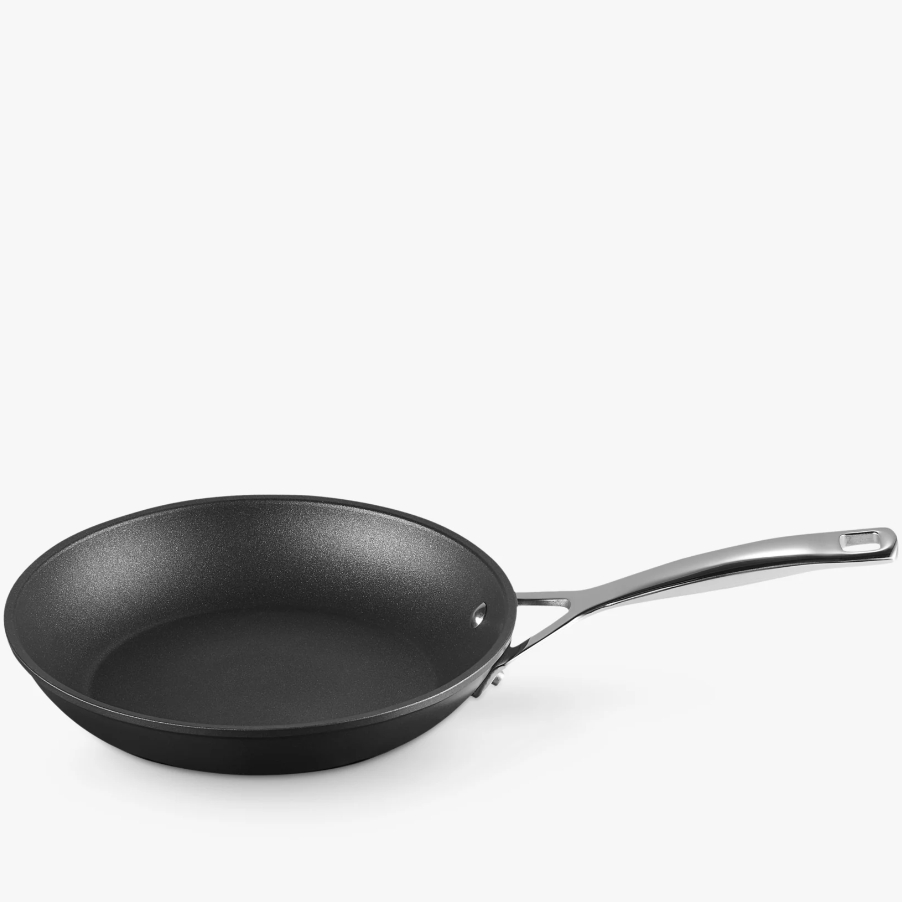
Best non-stick frying pan overall
RRP: £79.00 - £149.00
Tried and tested by our Head of Shopping for over a year, the Le Creuset Toughened Non-Stick Shallow Frying Pan is truly the mightiest pan on the market. The toughened non-stick is so durable you can even use metal utensils, as wrong as that may feel!
The pan can also go in the oven for heats of up to 260°C, and is available in five sizes, from 20cm to 30cm wide. It's dishwasher-safe, easy to care for, and heats quickly and evenly for a pancake in a jiffy or getting a good sear on some chicken skin. We know it's not the cheapest option on the market, but aside from that, we can't find fault with it.
Buy if: You want a durable pan that won't let you down
Avoid if: You're after a pan that's under £50
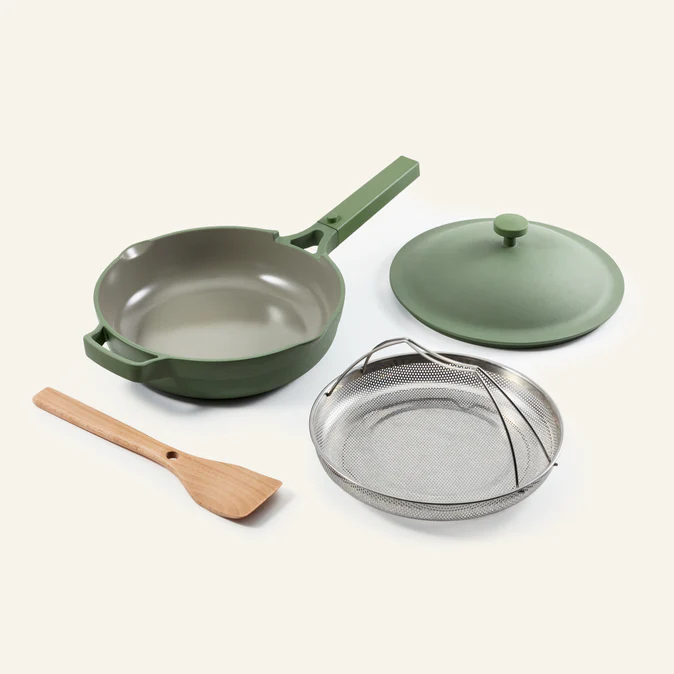
Most versatile non-stick frying pan
RRP: £130
Perhaps the internet's most hyped-up pan, our testing of the Always Pan 2.0 has seriously impressed us. For one, the new design is now oven-safe, and the ceramic nonstick is still going strong after almost a year of testing. The deeper sides to this pan mean you can use it to bake a pasta dish or (using the included steam basket) cook some veggies.
Our main gripe is that the underside of the pan can get a little discoloured after prolonged use, so that aesthetic finish may not be life-long. When it comes to cooking prowess though, it's well worthy of a space on your hob.
Buy if: You want an all-rounder
Avoid if: You want a dishwasher-safe option
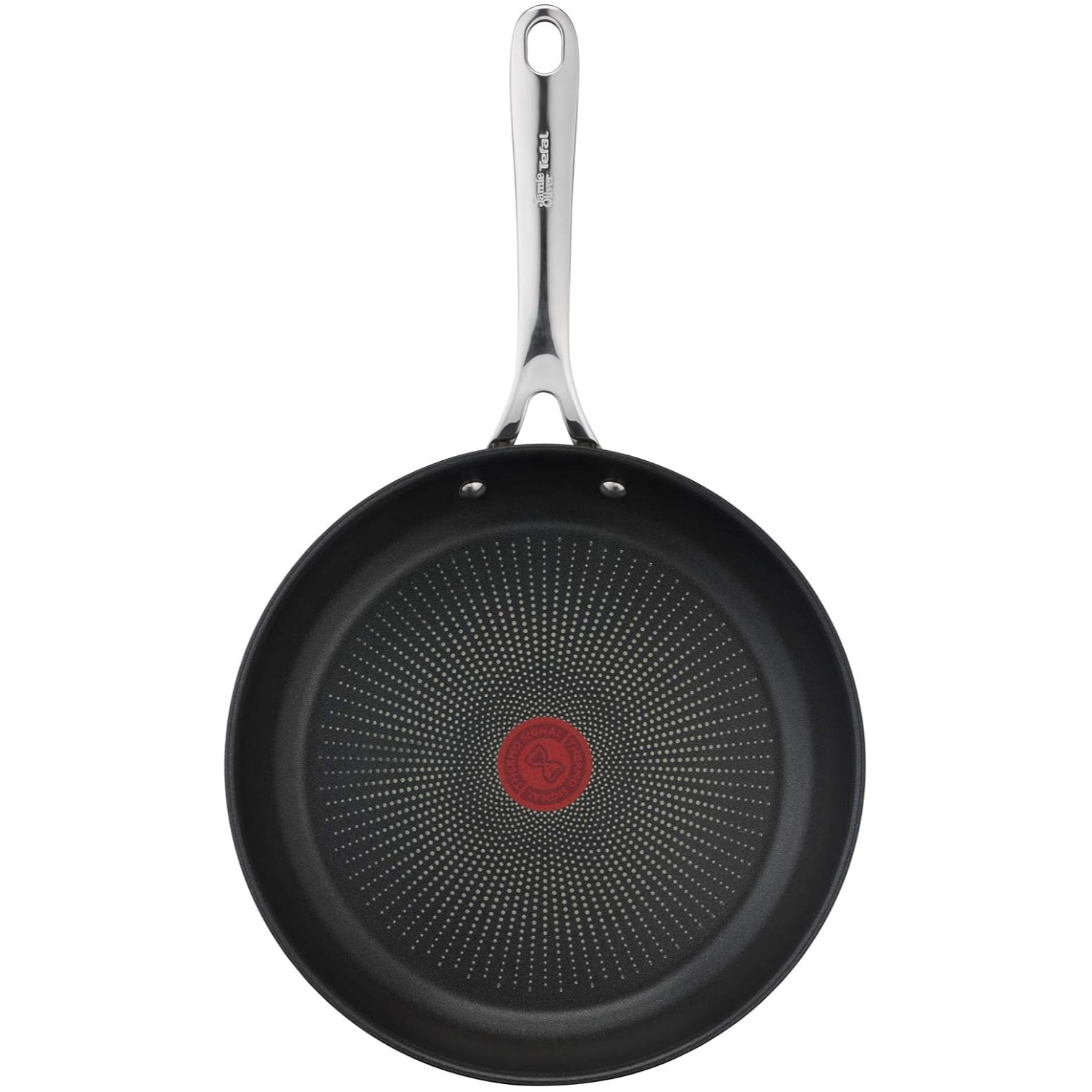
Best value non-stick frying pan
RRP: £55 - £75
The Tefal Jamie Oliver Stainless Steel Frying Pan has been through it all in our test kitchen, and it's still our top pick for a non-stick coating that won't let you down. It features Thermo-Signal technology, meaning the icon in the centre of the pan fades away when the pan is suitable pre-heated. That might sound a bit gimmicky, but its' actually really useful for getting a good sear on steak or salmon skin without having to hold your hand dangerously close to the cooking surface.
This low-maintenance option is scratch-resistant, even with metal utensils, can go in the oven up to 210°C, and is dishwasher-safe.
Buy if: You want cooking tech that actually works
Avoid if: You want to use it in a super-hot oven
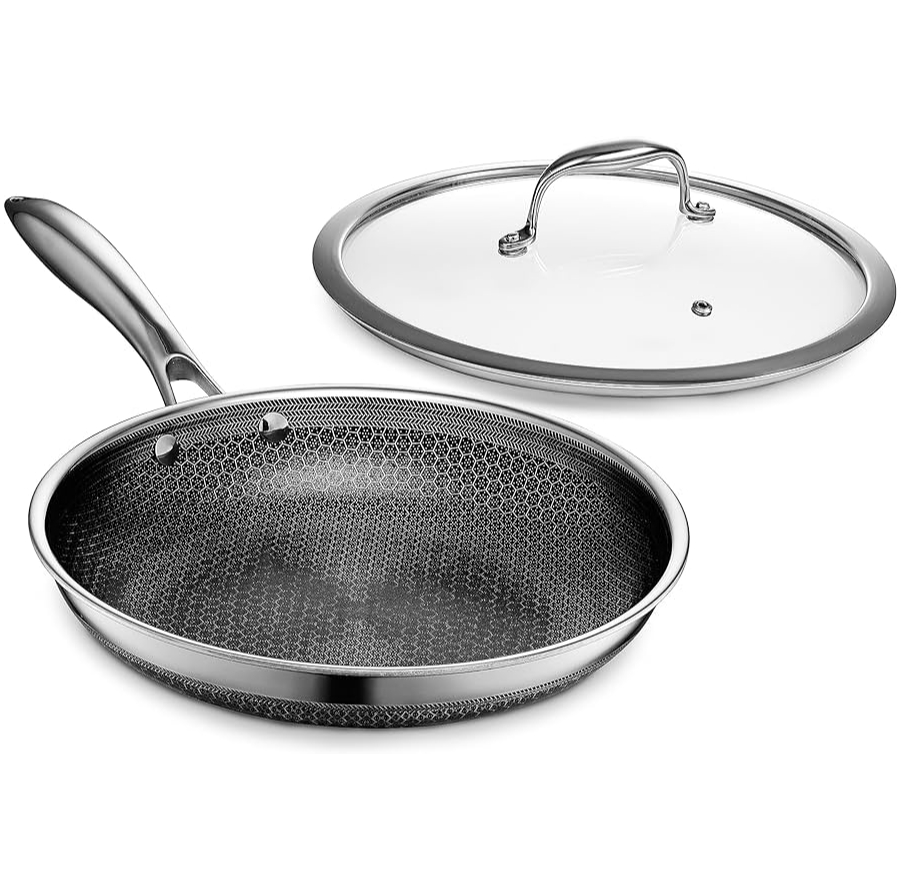
Best hybrid non-stick pan
RRP: £94.99 - £134.99
Backed by Gordon Ramsay, and a whole host of smart cooking tech, the HexClad Hybrid Pan has quickly revolutionised the cookware space with its hybrid design that combines non-stick hexagons with a stainless steel lining. The result really is the best of both worlds, a pan that we're really confident will last us a lifetime.
Our tester has put this pan through the wars in her kitchen, cleaning the underside with wire wool and using metal utensils to scrape up omelets and stir-fry. She's yet to find a challenge it's not up to. While it's pricey, serious home chefs won't regret the investment.
Buy if: You want an investment that will last
Avoid if: You want a more traditional non-stick finish
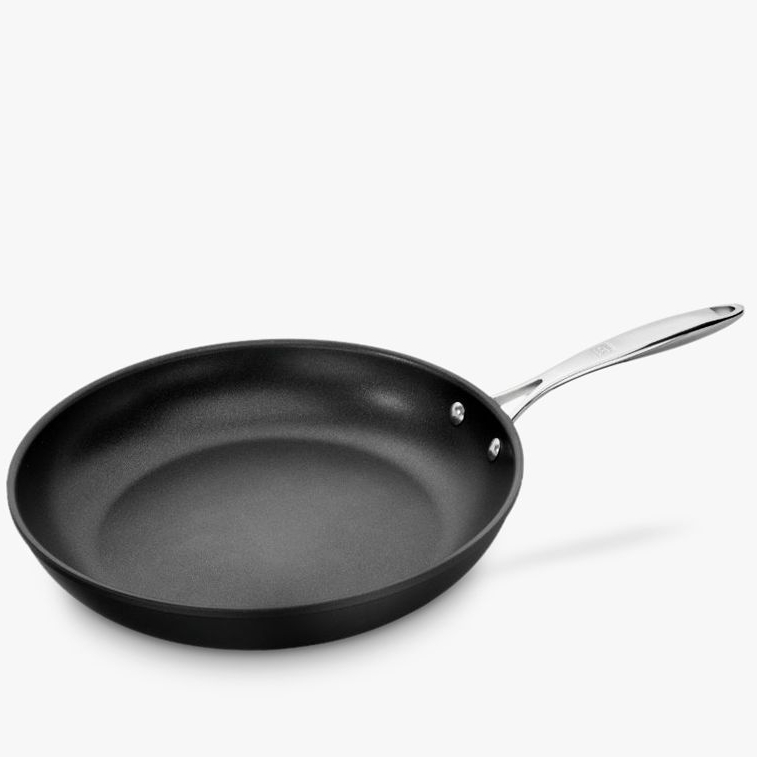
Best scratch-resistant non-stick pan
RRP: £79 - £104
The Zwilling Forte Duraslide features a durable aluminium core, coated with the brand's 'Ti-X' scratch and abrasion-resistant coating. Having tested the pan for a year now, we can confirm that it's a durable option that's also ergonomic and lightweight enough to flip a pancake or lift in and out of the oven.
One downside of this pick is that it's only oven-safe up to 180°C, although that's the temperature most of us pre-heat the oven to, so it's unlikely to be a big problem. It's dishwasher-safe (and cleans up beautifully) as well as induction-compatible, making it a great pick for most kitchens.
Buy if: You want a pan that cleans up easily
Avoid if: You'd prefer to use metal utensils
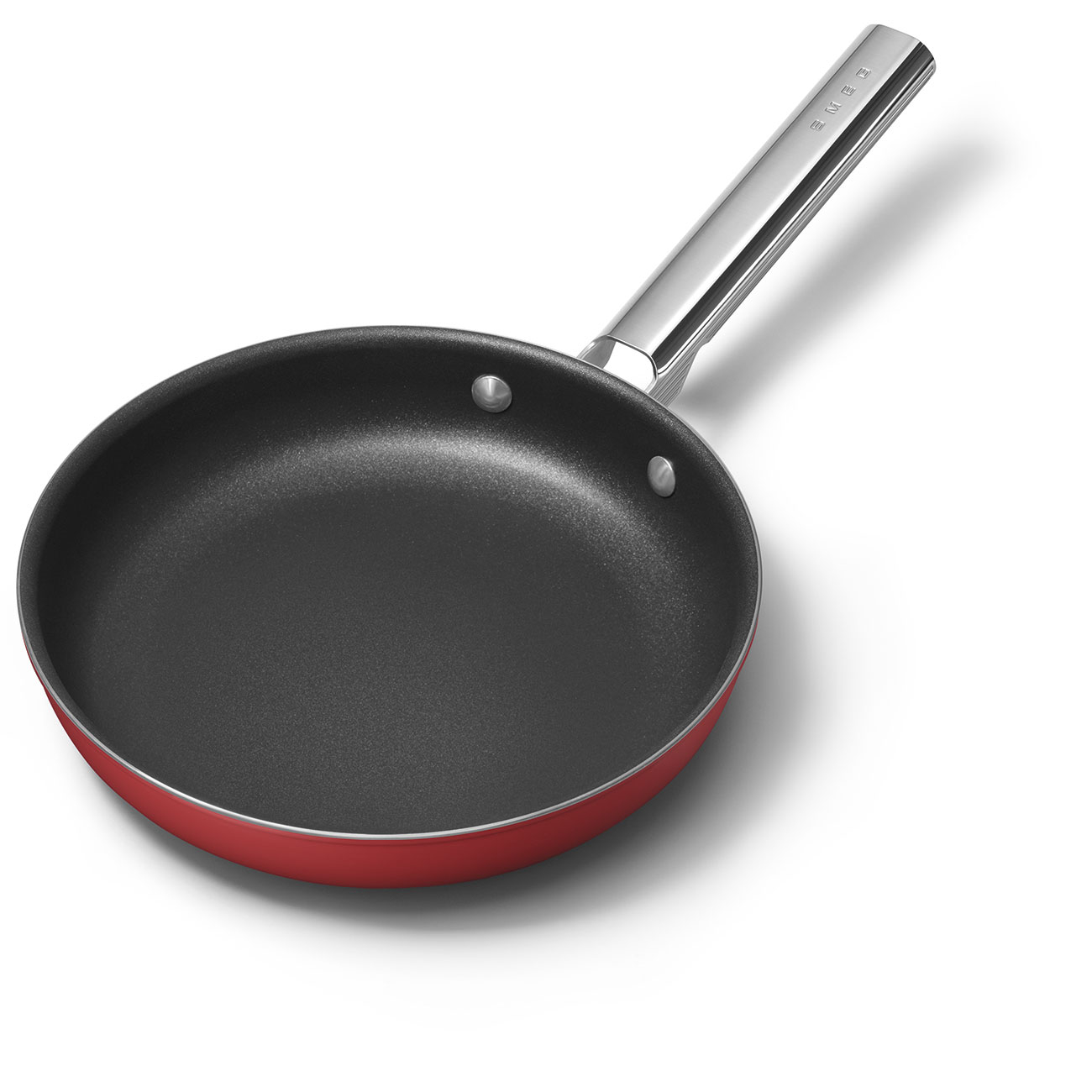
Best looking frying pan
RRP: £79 - £99
If you've got the full SMEG setup in your kitchen. there's no better pairing than this beautiful 50's-style frying pan. Available in cream, black and red, it comes in four sizes. The elongated handles are lightweight and stay cool to the touch when handling them over a hob.
We were particularly impressed by how evenly this option heats up. The gently curved sides of the pan meant that making a stir-fry was easy, and the uniquely shaped starburst pattern on the base helped it to heat up quickly and evenly. It was simple to control the level of heat too, with the pan reacting well to temperature changes throughout our testing. Safe up to 250°C, this is an oven-safe nonstick pan with much more resilience than most, making it hugely versatile.
Buy if: You want a pan that cleans up easily
Avoid if: You'd prefer to use metal utensils
How we tested the best non-stick frying pans
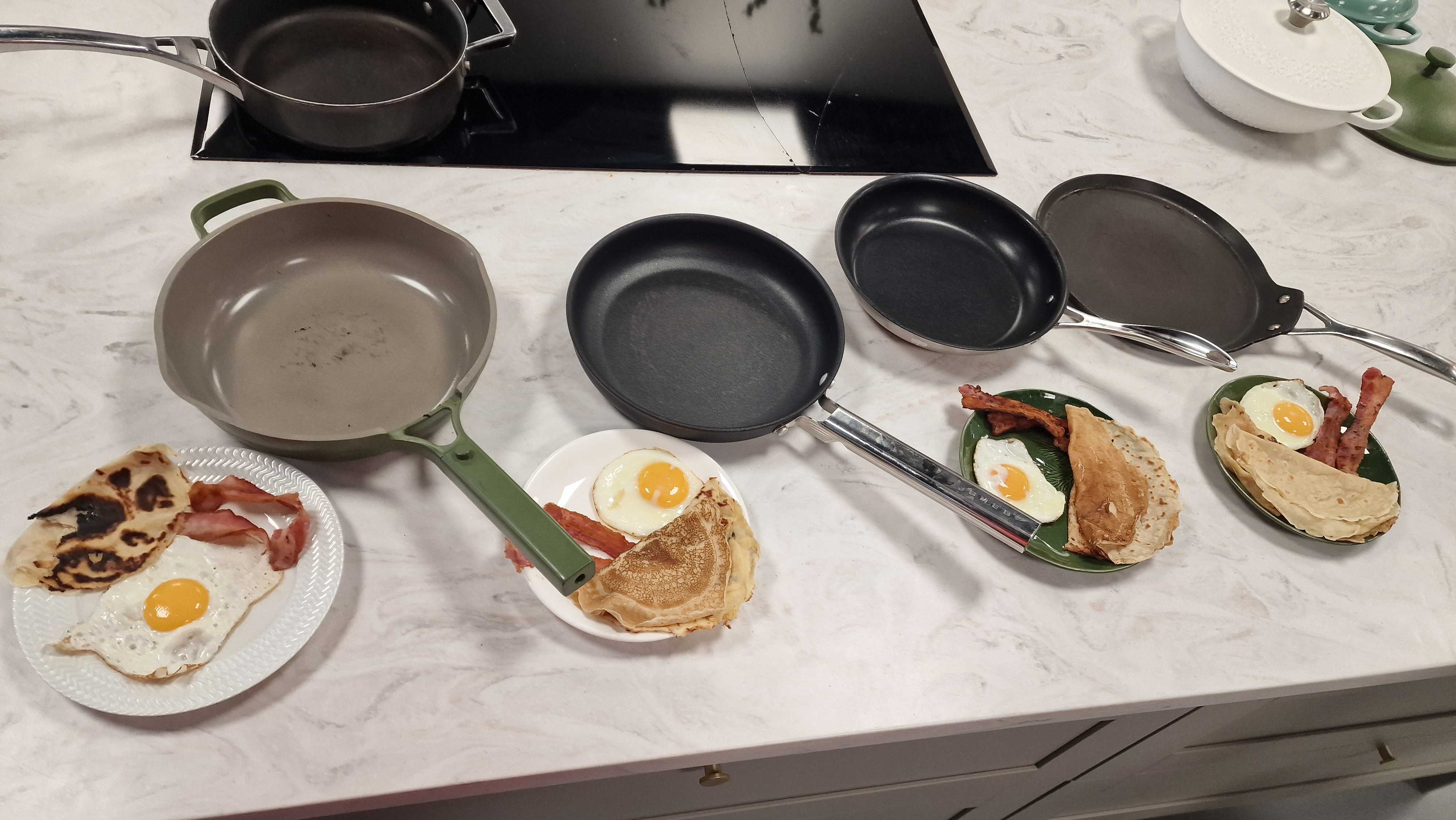
Despite their similar appearances, no two non-stick frying pans are the same, which means testing them against each other is a careful balance of comparison. In order to bring you only the very best non-stick we undertook some intricate trials.
- Appearance—when looking for the best cookware, there’s no harm in having something in your kitchen that also looks attractive. Having a good-looking non-stick also means you can present food directly from the pan, which less washing up.
- How well it worked—we examined things like the thickness of each base to see how well the model would retain heat and how well coated the interior was to evaluate its non-stick capabilities. We made sure to cook in each pan to get a true feel for its abilities.
- Extra features—for example, which noted which ones were oven safe, which had hanging hooks for easy kitchen storage, and which ones came with lids for a more versatile cooking experience.
- Ease of cleaning—non-stick pans should all be easy to clean—but we assessed how far this claim held up for each item. We also looked at whether each one was dishwasher-safe.
- Size—lots of brands will do a range of sizes, and we’d actually recommend having a good range of non-stick pans. Smaller pans are great for couples or frying eggs in, while larger ones are perfect for full, family-sized meals and one-pot meals like risotto.
Non-stick frying pan FAQs
Are non-stick frying pans safe?
When non-stick pans were first manufactured they were most commonly coated in Teflon, which contained the chemicals perfluorooctanoic acid and polytetrafluoroethylene (which you might have seen written down more commonly as PFOA and PTFE). When heated on high—roughly above 536F or 280C—the coating emitted chemical byproducts from these elements, which many thought could potentially contribute to health complications.
Since 2013 though, most makers of non-stick pans have removed these chemicals from their coatings, to bring consumers much safer, non-toxic alternatives. All of the best non-stick pans will come with details on what coating has been used. Lots of new non-stick pans are actually coated in a thin layer of ceramic, which are glazed in a kiln rather than coated by chemicals. These are generally considered to be the healthiest and safest non-stick pans on the market.
And in fact, a study published in the scientific journal Food Additives and Contaminants explained that they had tested 26 non-stick cookware items—and come to the conclusion that none of them actually released any harmful chemicals.
Do professional chefs use non-stick frying pans?
While some chefs do of course use non-stick pans in their own homes (such as Jamie Oliver above, for example), most don’t use them in their professional kitchens. The reason for this is that they’re typically not great when used in conjunction with metal utensils—which chefs use a lot. Typically chefs will use stainless steel pans or cast iron skillets in their restaurants.
However, non-stick pans are ideal for use at home because of their ease of use and how easy they are to clean, as well as how quickly many of them come to heat.
What should you use non-stick frying pans for?
We think this is probably an obvious one, but the best use for non-stick pans is for anything that might be in danger of sticking to your pan too much whilst cooking. However, some examples of the best things to cook in your non-stick pan include:
- Egg-fried rice—typically, the best non-stick pans are used for jobs like making egg-fried rice—where the egg remnants can be hard to shift afterwards.
- Stirfry—non-stick is also great for quick stir-fries, where you want to keep everything moving super fast, and so don’t want any friction from the base of your pan.
- Pancakes—no one wants their pancakes to stick to their pan—instead, you need them to easily glide along the base. For that reason cooking pancakes in a non-stick is ideal.
- Quesadillas—other items that you want to heat but want to be able to slide out easily are ideal for a non-stick—an example is a quesadilla, that you want to be able to lift out after just a few minutes without losing any food to the pan.
It’s probably worth noting though that while non-stick pans are great (probably one of the most used pieces of cookware, actually), they can’t completely replace all other items in the kitchen.
A cast-iron skillet, for instance, is the best thing to cook a steak on, because it conducts heat so well, while copper pots and pans are perfect for dinner parties when you want to serve straight from the cooker to the table in something premium and polished.
Sign up to our free daily email for the latest royal and entertainment news, interesting opinion, expert advice on styling and beauty trends, and no-nonsense guides to the health and wellness questions you want answered.

Millie Fender is Head of Ecommerce at Woman&Home, and was formerly Head of Reviews across a number of Future Plc's leading Homes titles such as Ideal Home and Homes&Gardens. As our head of all things shopping, Millie is committed to giving readers honest, expert advice when it comes to spending their hard-earned cash.
Millie has always had a personal interest in fashion and beauty and has (almost) ditched the straighteners since learning how to look after her curly hair. In her free time, she loves to knit and bake, and has a 200-strong bucket list of London restaurants she's desperate to try out.